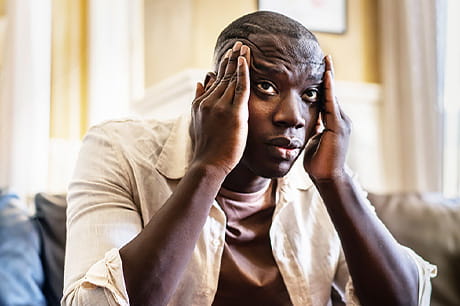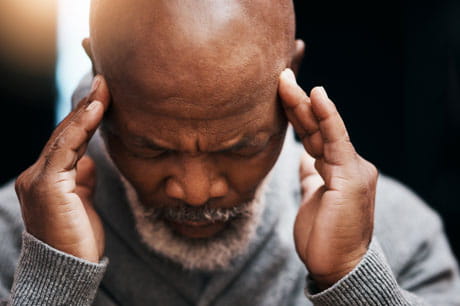7 little-known stroke symptoms in women
Hiccups, fatigue and nausea can be subtle signs of a stroke in women.
Every second counts when it comes to stroke treatment. That’s why it’s important to know and recognize the early signs.
But women — who are at an increased risk — can have some symptoms that are harder to spot.
“Getting treatment within three hours of the first symptoms improves recovery outcomes,” explains Carolina Vivar, MD, a vascular neurologist at Geisinger. “The sooner you can recognize some of the subtle stroke symptoms in women, the sooner you can call 911.”
Symptoms of a stroke in women
Beyond the more obvious symptoms (like facial drooping and numbness), some stroke signs in women are easier to brush off.
“What complicates strokes in women is that they may have some unusual nonfocal neurological symptoms, which means that they may see early signs as something much less serious,” says Dr. Vivar.
Seven less common symptoms of strokes in women include:
- Confusion, disorientation, memory problems or a sudden change in behavior
- Headache
- Nausea, vomiting or lightheadedness
- Fatigue or general weakness
- Persistent hiccups
- Seizures, fainting or loss of consciousness
- Neck pain, especially on one side
If you have any of these symptoms, plus the more common signs of a stroke, seek medical advice.
How to spot a stroke FAST
In addition to those unique effects, women may also have more common stroke symptoms, including:
Sudden numbness in the face, arm or leg, primarily on one side of the body
- Difficulty speaking, including slurred speech or trouble finding words
- Blurred vision or trouble seeing in one or both eyes
- Trouble walking or problems with dizziness or balance
- Severe headache
To help spot the signs of a stroke, remember the American Stroke Association’s F.A.S.T. acronym:
- Face drooping: Is one side of the face numb or drooping?
- Arm weakness: Does one arm feel weaker or numb?
- Speech difficulty: Is speech slurred?
- Time to call 911
“These more common symptoms usually happen suddenly,” says Dr. Vivar. “Recognizing the signs quickly is key to getting care as soon as possible.”
Stroke risk factors in women
Several conditions can increase a woman’s risk for stroke, including:
- Having migraines with aura
- Taking birth control pills
- Being pregnant, especially during the final months of pregnancy and immediately following giving birth
- Having preeclampsia (high blood pressure during pregnancy)
- Using hormone replacement therapy (HRT)
- Having atrial fibrillation, also known as AFib
Your risk can also increase based on factors like your race or age.
“Studies have shown that strokes are more common in women who are African American, Hispanic or Latino and Asian/Pacific Islander,” explains Dr. Vivar. “We also know that stroke risks increase as you age, and women tend to live longer than men.”
If you have any of these conditions or risk factors, it’s important to let your primary care provider know, especially if you or your family has a history of strokes.
How to prevent strokes
Certain lifestyle changes can help lower your risk of stroke. Dr. Vivar suggests the following:
Eat healthy
Eating well can help prevent stroke as well as lower high blood pressure and prevent heart disease. Focus on eating fruits, vegetables, whole grains, low-fat dairy, lean protein, seafood and healthy oils. You should also limit saturated fats and stay away from trans fats, added sodium and added sugar.
Get enough exercise
Exercising regularly, whether it’s a brisk walk, swimming or running, can also reduce your risk of stroke. If running miles on a treadmill isn’t really your speed, try incorporating exercise into your daily habits.
Manage high blood pressure and heart conditions
High blood pressure and heart conditions like AFib can cause clots that increase your risk of stroke. Monitor your blood pressure regularly and be aware of the subtle signs of heart disease.
Check your blood sugar levels and treat diabetes
People with diabetes are at higher risk of stroke because of how high glucose levels affect blood vessels. Check your blood glucose levels often and work with your provider to manage your diabetes.
Cut out alcohol and nicotine
Both smoking and drinking alcohol raise your blood pressure, which increases your risk for stroke. Quit smoking and limit alcohol to one drink per day to reduce your risk.
Next steps:
Learn about stroke care at Geisinger
What happens during a stroke?
Could that fluttering in your chest be AFib?





